Tiananmen Square
Tian'anmen Square, located in the center of Beijing, is located in the East Chang'an Street of Dongcheng District, Beijing, from Tian'anmen Street in the north to Zhengyang Gate in the south, from the National Museum of China in the east to the Great Hall of the People in the west, 880 meters long in the north and 880 meters long, 500 meters wide in the East and west, covering an area of 440,000 square meters. It can accommodate 1 million people to hold a grand The square.
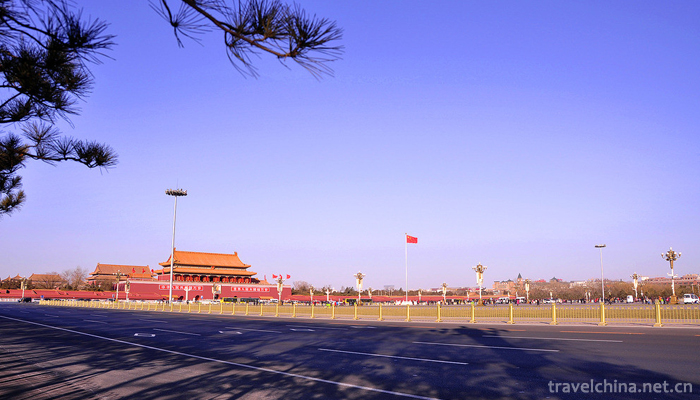
The ground of the square is all made of light-colored granite strips treated by special techniques. In the center stands the monument of the people's heroes and the solemn Memorial Hall of Chairman Mao. On both sides of Tian'anmen are the Labor People's Cultural Palace and Zhongshan Park, which are integrated with Tian'anmen and form Tian'anmen Square. In 1986, Tiananmen square was selected as one of the sixteen scenes of Beijing, with the name of "Tianan Li day".
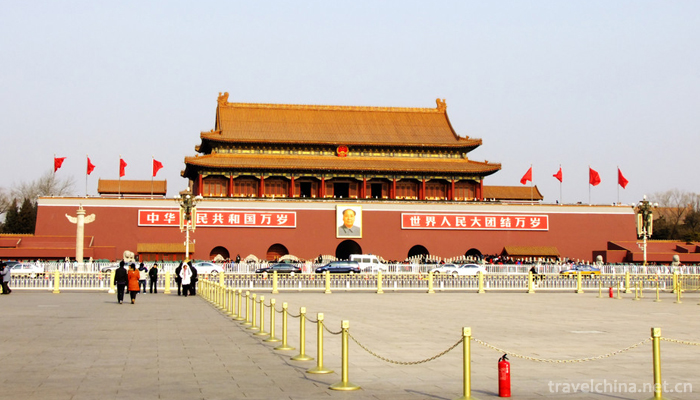
Tian'anmen Square records the Chinese people's indomitable revolutionary spirit and courageous heroism. The May 4th Movement, the January 29th Movement and the May 2nd Movement all left a strong color for the history of China's modern revolution. At the same time, Tian'anmen Square is the place where countless important political and historical events took place. It is also the place of China's decline and rise. Historical testimony.
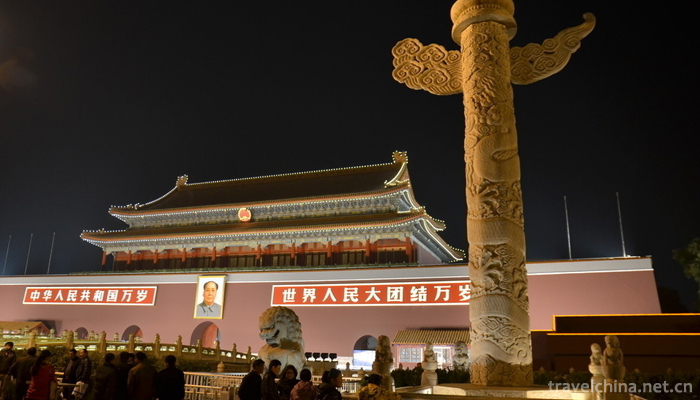
At 7:36 on January 1, 2018, the flag-raising ceremony at Tian'anmen Square was performed for the first time by the honorary guard of the People's Liberation Army and the military band.
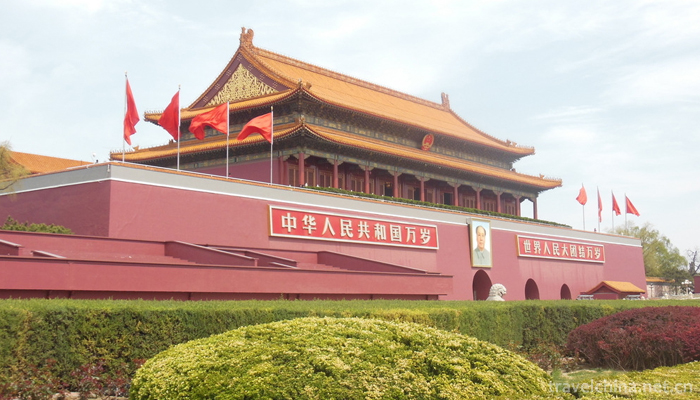
Tiananmen, formerly known as tiantianmen, was built in Yongle for fifteen years (1417).

After eight years of renovation (1651), it was called Tiananmen. At this time, Tian'anmen Square is just a closed T-shaped Palace square, an important place for the Ming and Qing Dynasties to hold major celebrations and issue decrees to the whole country, also represents the dignity of the imperial power.
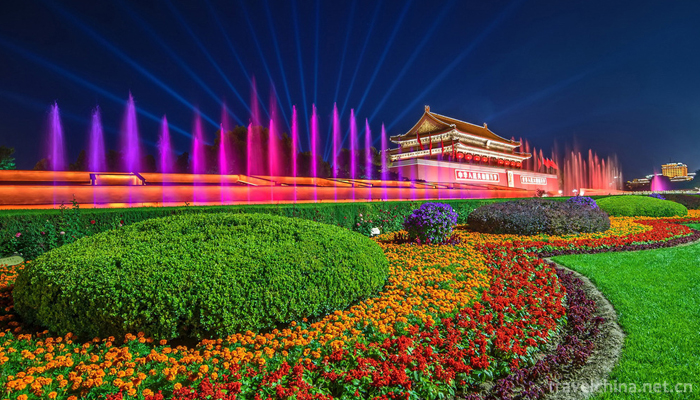
In the 26th year of Guangxu (1900), the Allied Forces of the Eight Kingdoms invaded Beijing, and Tiananmen Square was regarded as a place for the invaders to garrison their troops.
In the three year of 1914 (1914), in May, the Beiyang government launched the transformation of the old capital plan. Removal of the 1000-step corridor in front of Tian'anmen Gate, construction of asphalt roads, urn city, etc., the original closed Palace Square into an open space for free passage and stay, the dignity and mystery of the imperial power was dissolved. Because of Zhu Qijun's first renovation of Tiananmen Square, Tiananmen Square began to become a modern square.
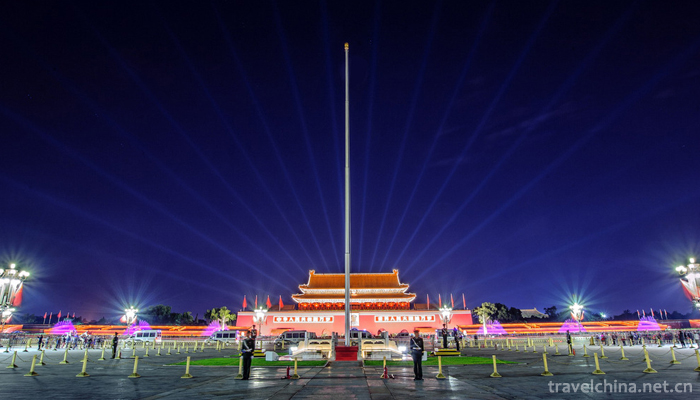
In seventeen years (1928), Jiang Jieshi won the northern expedition. In July, 70 thousand military and political organizations in Beiping held a celebration conference in front of Tiananmen. On August 24, a portrait of Sun Yat-sen was hung on the Tiananmen Tower, the first time a personal portrait was hung on the tower.
In the twenty-sixth year of the Republic of China (1937), under the rule of the Japanese puppet government in Beijing, Tiananmen Tower was pasted with the slogan "Building a New East Asian Order".
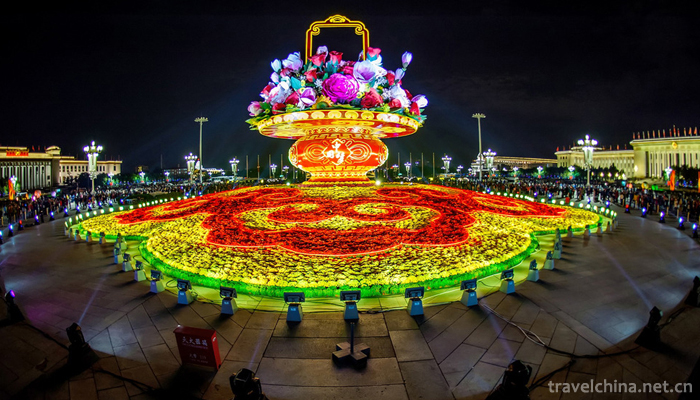
In October 1, 1949, the founding ceremony of People's Republic of China was held.
In 1950, because the distance between the flagpole of the square and Tiananmen Gate was not enough to pass the width of the parade in the future, Huawa and Shilion in front of Tiananmen Gate were moved 6 meters.
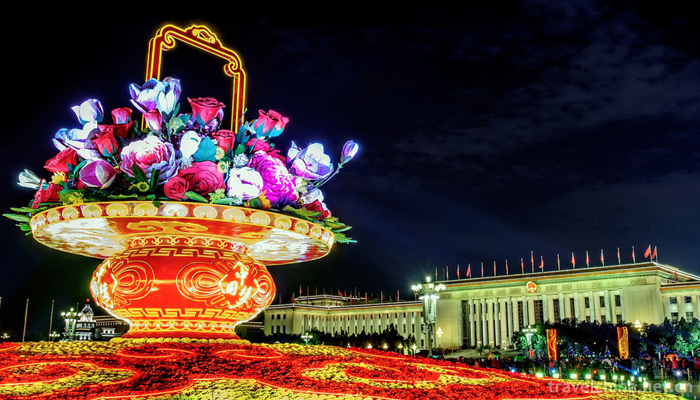
In 1954, the Chinese Gate, the Chang'an Left Gate, the Chang'an Right Gate, the Ministry of Hukou Punishment and other government offices, as well as the warehouse chessboard street and other buildings were demolished, and a monument to the people's heroes was built in the square.
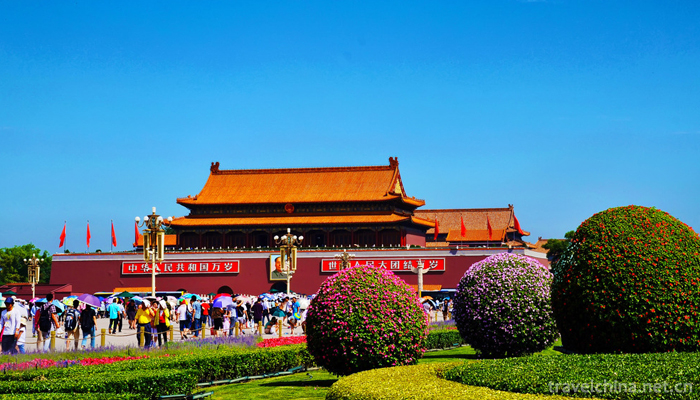
In 1958, to meet the 10th anniversary National Day, Tiananmen square began the largest expansion in history. Removal of the Red Wall at the Chinese Gate, Chessboard Street and Plaza, with a total area of 44 hectares, is nine times the size of the Russian Red Square. Architect Tao Zongzhen, who suggested that the width should be compressed to suit the continuity of the surrounding roads, was told: "It can't be moved. It was decided by Chairman Mao." At the same time, the monuments of the people's heroes erected on the square, the Great Hall of the People, the Chinese Revolution and the Military Museum on both sides of the square have laid the tone of the square as the political center.
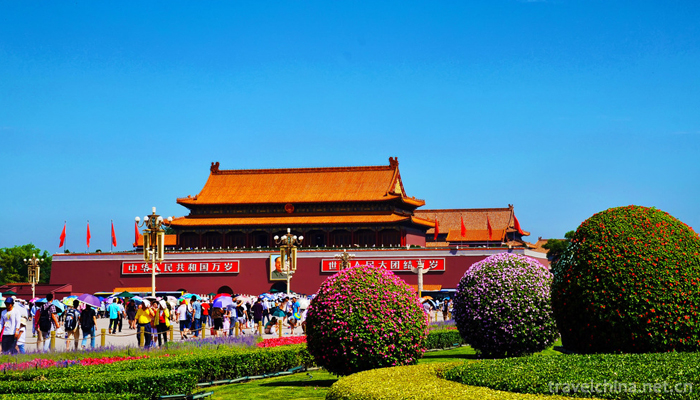
In September 9, 1976, Mao Zedong passed away. Tiananmen square has undergone the last large-scale reconstruction -- the construction of the Mao Zedong Memorial Hall.
On January 1, 1988, the first day of the international tourism year in Beijing, the Tiananmen tower was officially opened.
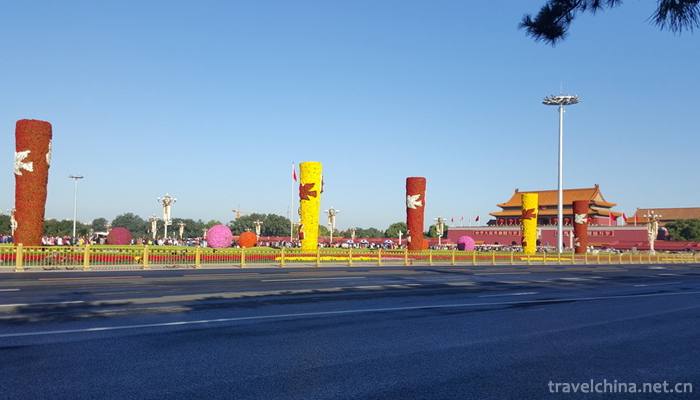
In October 1, 1999, the 50th anniversary National Day ceremony was held.
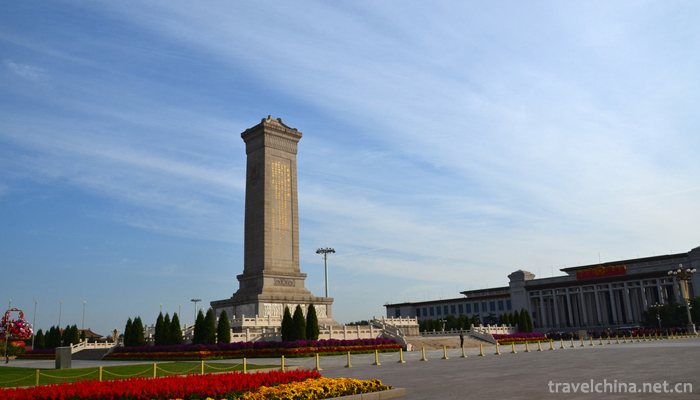
In 2009, to celebrate the 60th anniversary of the National Day, two huge curtains were placed in Tiananmen Square, where scenery films and public service advertisements were scrolled across the screen.
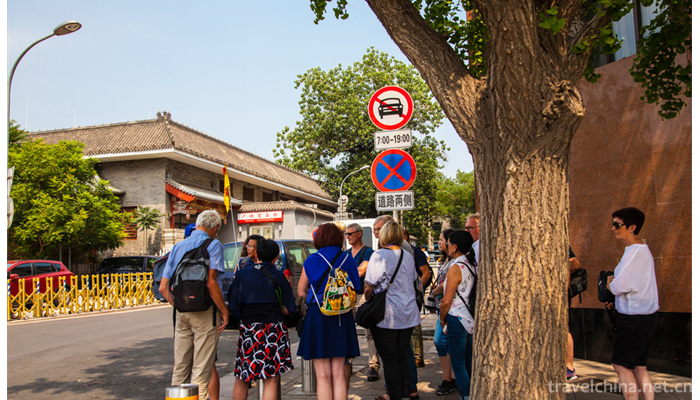
On September 3, 2015, the 70th Anniversary of the Victory of the Chinese People's War of Resistance Against Japan and the World Anti-Fascist War was held in Beijing.
At 7:36 on January 1, 2018, the flag-raising ceremony was held in Tiananmen Square for the first time by the honor guard of the People's Liberation Army and the military band.
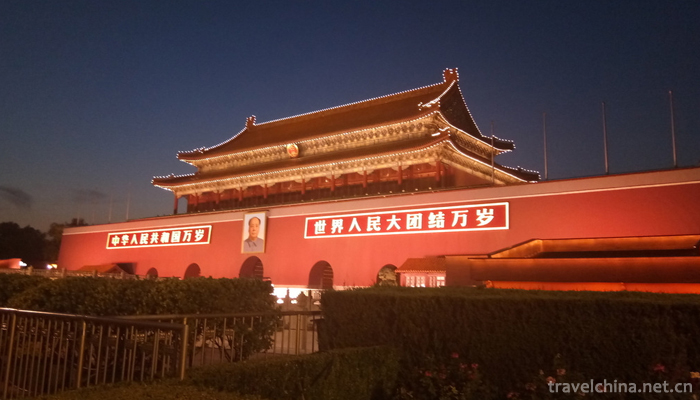
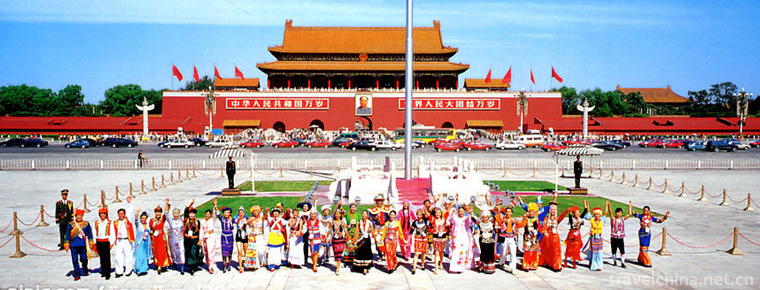
-
1.Sweet potato porridge
Main ingredients for food ingredients: 250 grams of fresh sweet potato, 150 grams of Japonica rice, a number of red dates, and a proper amount of sesame seeds
Time 2018-11-02 -
2.Youyang Peach Blossom Source Tourist Scenic Area
Taohuayuan Scenic Spot is located in the suburbs of Youyang County, which is known as the "Liangdu of Chongqing". It is a national AAAAA-level tourist attraction
Time 2018-12-12 -
3.Lushan National Forest Park
Located in the center of Shandong Province, Lushan National Forest Park is an important scenic spot of Boshan Scenic Tourist Area, with its main peak at 1108.3 meters above sea level, the highest peak
Time 2019-02-06 -
4.Shuangrufeng Scenic Area
Guizhou Shuangrufeng Scenic Area is located in Zhenfeng County, Guizhou Province. It is 9 kilometers away from the county town and on the main road of Zhenfeng-Guiyang
Time 2019-02-08 -
5.Browns Folk Songs
The folk songs of the Browns are rich in content and many melodies. Every time they get married, move to a new house, celebrate New Year's Day or work, young people
Time 2019-04-04 -
6.Acrobatics in Dongbeizhuang
Dongbeizhuang acrobatics is a traditional folk acrobatics in Puyang City. Dongbeizhuang, Yuecun Township in Puyang City, is a pearl in the vast plain of northern Henan Province
Time 2019-04-27 -
7.Pingyao Shage Player
Pingyao Shage Opera, commonly known as Shage Renren, also referred to as Shage, is one of the traditional handicraft techniques in Pingyao, Shanxi Province. Because it was usually placed in the cabine
Time 2019-06-09 -
8.Pulangorgozi
Pulangorgozi, also known as "fruit harmony", is a kind of self-entertaining dance, which originates from Pulan County and is widely spread in Ali countryside. It is a kind of hand in hand, s
Time 2019-06-09 -
9.Qiang Nationality Year
The Qiang Year is a traditional festival of the Qiang people, also known as the Year of the Youth, which is held on October 1 of the lunar calendar every year. In Maoxian area, there are special regul
Time 2019-06-10 -
10.Bao Shu Ya
Bao Shuya (the first 723 years or the first 716 years - the first 644 years). Si Surname, abalone His name is a famous uncle. Yingshang (now belongs to Anhui (person) the Spring and Autumn period Qi S
Time 2019-09-11 -
11.Sightseeing car in Chengdu Giant Panda Base
Chengdu Research Base of giant panda breeding currently covers an area of 1000 mu. Tourists can choose to take the sightseeing bus voluntarily if they walk for about 3 hours or take the electric sightseeing bus for about 1-2 hours. At present, there are 8 electric sightseeing buses in Chengdu Giant Panda Breeding Research Base to provide travel services for Chinese and foreign tourists.
Time 2020-12-13 -
12.Suining tertiary industry
In 2019, Suining achieved a total retail sales of consumer goods of 63.191 billion yuan, an increase of 10.7% over the previous year. In terms of business location, retail sales in urban areas reached 46.171 billion yuan, an increase of 10.7%; in rural areas
Time 2020-12-16